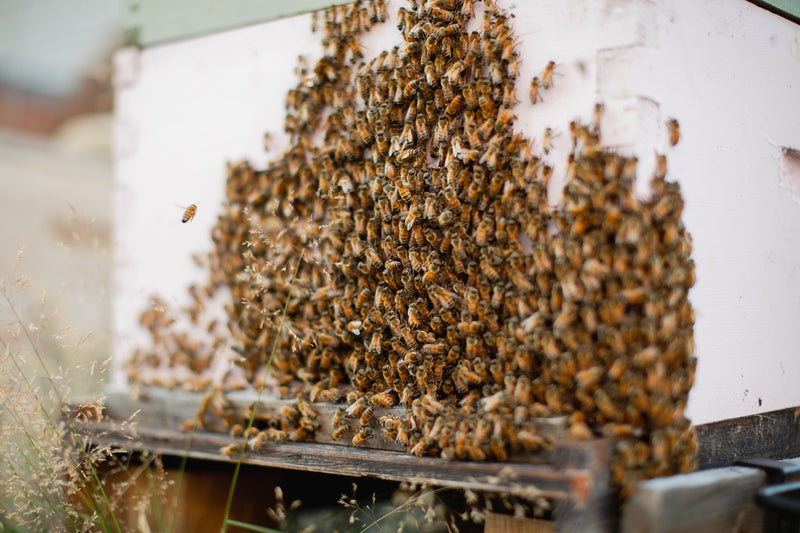
With the sudden shift in temperature, you may notice a new behaviour in your hive—clusters of bees gathering around the entrance or layering along the outside of the bottom brood box. While it may look like your colony is preparing to move out, this behaviour is completely normal and temporary. You might be wondering: Are they going to swarm? Should you intervene? With a quick hive inspection to rule out possible swarming, you can rest assured!
Beekeepers call this ‘bearding.’
As the season progresses, your hive population grows exponentially, resulting in more activity and heat inside the hive. To help regulate the temperature, a portion of the honeybee population will relocate to the exterior, allowing the inside of the hive to cool down. Just like us, sometimes the summer heat is just too much!
You may also notice some honeybees standing on the landing board near the entrance, rapidly beating their wings. These bees are ventilating the hive, pushing cooler air inside to help maintain an optimal temperature. This temperature control is essential not just for their own comfort but to ensure honey temperature is regulated as well.
What Bearding Tells You About Your Hive
The size of the bearding cluster can indicate how strong your hive is and whether they have enough space. A large cluster every evening is a great sign of a healthy, abundant colony. However, it’s a good idea to do an inspection to ensure they have enough room to expand. Is it time to add another box?
If your hive has plenty of space and still beards, there’s no need for concern. The bees are simply managing their environment as they should. As temperatures cool in the evening, the honeybees will naturally return to the comfort of their hive boxes.
If you spot the beginnings of a queen cell during your routine hive inspection, this may be an indicator that your hive is thinking of swarming. If this is the case, check out our swarm blogs for some guidance!
Good luck & happy beekeeping!
